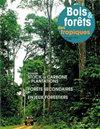马达加斯加Betampona保护区周围采用以tsabo为基础的农林业替代农业的结构和文化限制
IF 0.6
4区 农林科学
Q3 FORESTRY
引用次数: 0
摘要
马达加斯加以其独特的生物多样性而闻名于世。然而,刀耕火种(tavy)占该国森林砍伐的80%至95%。尽管几十年来一直在努力推广以沙波为基础的农林业作为一种可持续的替代方案,但这种农业技术已经将马达加斯加东部Betampona严格自然保护区(约1200公顷)50%的原始面积转化为农田或次生林。本研究采用跨学科的方法和综合的理论框架,试图捕捉到在保护区周围缓冲区的小农农场采用和推广以沙博为基础的农林业作为替代农业的限制因素。尽管以农林业为基础的农林业提供了高达67.6%的农业现金收入,但抽样调查的20%至43%的家庭不再希望建立新的以农林业为基础的地块或扩大其现有地块;40.6%的农户和62.7%的农户仍在继续种植单一作物。本文认为,阻碍本研究区域建立或扩展的因素包括结构和文化两个维度。一方面,日益加剧的地理隔离、农村的不安全和贫困,以及农产品销售渠道的完全中断,使农民不愿扩大耕种面积。另一方面,尽管稻米是马达加斯加身份的一部分,并支配着村庄文化的各个方面,但推广tsabo的项目未能将稻米纳入他们向农民提出的农林系统中。建议决策者和发展规划考虑到这些结构和文化因素,以便设计符合生产者需求的农林复合系统。本文章由计算机程序翻译,如有差异,请以英文原文为准。
Structural and cultural constraints on adopting tsabo-based agroforestry as an alternative to tavy around Betampona Reserve, Madagascar
Madagascar is known worldwide for its exceptional biodiversity. However, slash-and-burn cultivation (tavy) accounts for 80 to 95% of deforestation in this country. Despite decades of efforts to promote tsabo-based agroforestry as a sustainable alternative, the tavy agricultural technique has converted 50% of the original surface area of the Betampona Strict Nature Reserve (about 1,200 ha) in eastern Madagascar into cropland or secondary forests. Applying an interdisciplinary approach with an integrated theoretical framework, this study attempts to capture the constraints on the adoption and extension of tsabo-based agroforestry as an alternative to tavy on smallholder farms in the buffer zone around this protected area. Although tsabo-based agroforestry provides up to 67.6% of their cash income from farming, 20% to 43% of the households sampled no longer wish to establish new tsabo-based agroforestry plots or to extend their existing ones; 40.6% and 62.7% of households have continued the practices of monoculture and tavy, respectively. This article concludes that the factors impeding the establishment or extension of tsabo-based cultivation in the study area include structural as well as cultural dimensions. On the one hand, worsening geographic isolation, rural insecurity and poverty, together with the complete breakdown of marketing channels for their agricultural products, are discouraging farmers from extending their tsabo plots. On the other hand, even though rice is part of the Malagasy identity and governs all aspects of village culture, projects for tsabo extension have failed to integrate rice within the agroforestry systems they propose to farmers. It is recommended that policymakers and development programs take these structural and cultural factors into account in order to design agroforestry systems that correspond to the producers’ needs.
求助全文
通过发布文献求助,成功后即可免费获取论文全文。
去求助
来源期刊

Bois et Forets Des Tropiques
FORESTRY-
CiteScore
1.50
自引率
16.70%
发文量
31
审稿时长
>12 weeks
期刊介绍:
In 1947, the former Tropical Forest Technical Centre (CTFT), now part of CIRAD, created the journal Bois et Forêts des Tropiques. Since then, it has disseminated knowledge and research results on forests in intertropical and Mediterranean regions to more than sixty countries. The articles, peer evaluated and reviewed, are short, synthetic and accessible to researchers, engineers, technicians, students and decision-makers. They present original, innovative research results, inventions or discoveries. The journal publishes in an international dimension. The topics covered are of general interest and are aimed at an informed international audience.
 求助内容:
求助内容: 应助结果提醒方式:
应助结果提醒方式:


